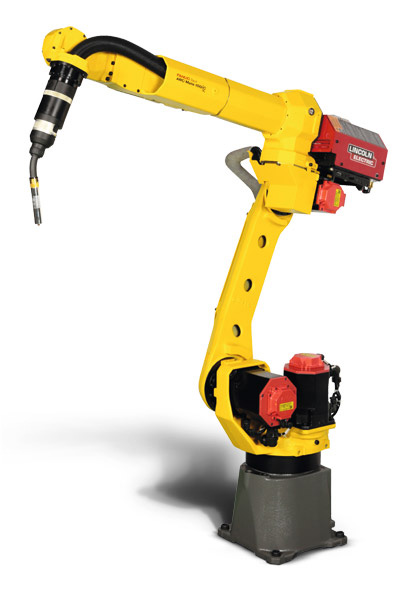Closing the Welding Skills Gap with Robotics
One of the biggest misconceptions about industrial robots is that robots take jobs away from people. This misconception often overshadows the reality that robots are needed in many fields due to expanding skills gaps and labor shortages, with one such field being welding. In today’s manufacturing world it is becoming increasingly harder for companies to find master welders. Many are retiring or moving on to other lines of work that may be less demanding. Another cause for this shortage is that younger adults are not pursuing manual labor jobs as once was the case in decades past. According to the American Welding Society the shortage of skilled welders is projected to grow to 372,000 by 2026. This statistic is alarming for those relying on welding for their manufacturing processes, especially with ever increasing productivity demands due to global market expansion. However, welding robots like the Motoman MA1400, are helping manufacturers close this skill gap and keep their operations up and running.
Welding applications such as MIG, TIG, and spot welding take great skill to perform. It can take welders many years of practice before they are considered skilled in these applications. This is where welding robots are extremely advantageous as they can become master welders in no time with just simple programming. Arc welding robots are readily available such as the FANUC Arc Mate 100ic and the FANUC Arc Mate 120ic/10L, since they are always being manufactured. They can be easily integrated with a welding power source, welding torch, and wire feeder. Welding robots can also be integrated with pre-engineered weld cells that include all necessary equipment for your welding process and arrive with everything pre-installed. For example, the Motoman Motoman MA3100 can be integrated with the Miller Auto-Axcess 450, while FANUC robots like the FANUC Arc Mate 120ic can be integrated with Genesis cells using a Lincoln Powerwave i400 power source. Making the switch from manual to automated robotic welding is a painless process and will eliminate the headache of searching for skilled welders in an already depleted market.
As mentioned above, welding applications require great skill along with precision, extreme concentration, and control. Even the most experienced welders cannot replicate these consistently. It is estimated that manual welders tend to only be about 20% efficient throughout the workday. Manual welders may stop for breaks, make equipment adjustments, and take longer in between workpieces. All this adds up to an inefficient process. Welding robots are designed to operate with a high level of control and precision. Not only that, but they are programmed to automatically go from one weld to the next one at much faster speeds than manual welders. At the end of the day, welding robots will produce more finished products, increasing productivity levels which will help manufacturers meet higher consumer demands. The efficiency of welding robots, such as the FANUC R-2000ib/165F, means that companies can fill open welding positions with fewer robots than welders. One welding robot can complete the work load of 3 to 4 manual welders because it is more efficient. With fewer welding robots needed to fill vacancies left by welders, closing the skills gap is becoming a reality.




